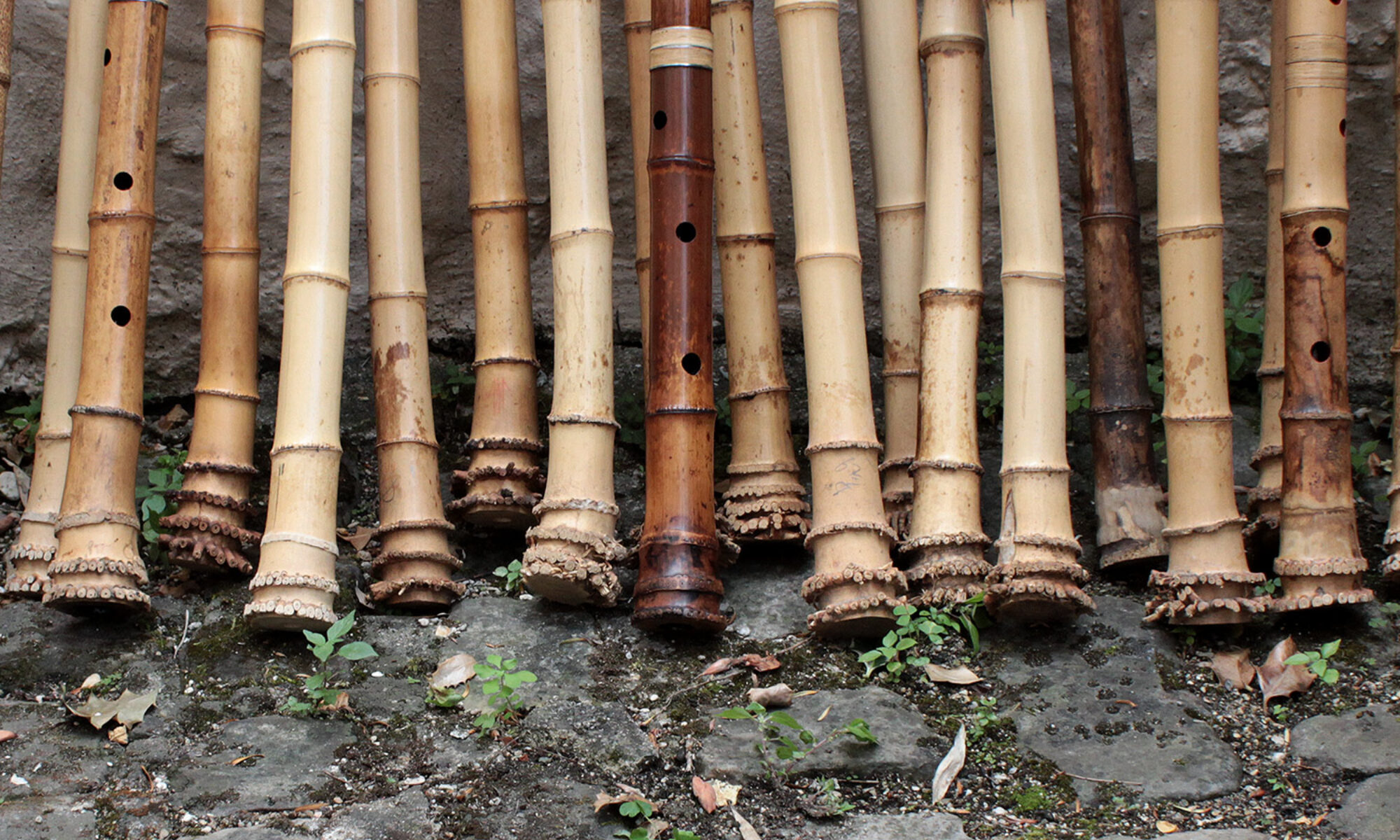SHAKUHACHI CONSTRUCTION
The shakuhachi is made from thick-walled madake bamboo (phyllostachys bambusoides) and has 4 holes on the front and one at the back making a pentatonic scale but through the meri/kari system of partial hole closing, up and down head movements and subtle changes in embouchure, a 12-tone chromatic scale up to 3 octaves can be produced.
The name shakuhachi refers to the standard length of the instrument according to the traditional Japanese measuring system – 1 shaku (尺) or japanese foot being ca. 30.3 cm and hachi (八) meaning ‘8’ , i.e. 8 sun, (sun being a tenths of a shaku), which translate into 1.8 Japanese foot (i-shaku-hachi-sun) or ca. 54.5 centimeters.


This standard shakuhachi, usually referred to as a “1.8” (one-point-eight) is in the key of D. Besides the standard length, flutes ranging from 1.3 to 3.3 are played, perhaps most commonly 1.6, 1.8, 2.1, 2.4, 2.7 and 3.0.
Broadly speaking the shakuhachi family splits into two main groups: the ji-ari shakuhachi, which have a meticulously build up inside bore where a mixture (“ji“) consisting of the resin from the urushi tree and tonoko powder (clay like stone powder) is applied along the inside of the bamboo walls to build up exact diameters of the inside bore with the aim to fine-tune pitch, tonal colours and response; and the ji-nashi shakuhachi which leaves the natural linings of the inside of the bamboo largely intact and adds no or little amounts of ji to produce a different, what some people describe as, a softer and more ‘natural’ timbre.
A QUICK GLANCE AT THE MAKING PROCESS
Harvest
Harvesting is usually done in the cooler winter months when the bamboo is not growing. To make jiari shakuhachi perhaps most common are bamboo culms which are around 33-36 mm in diameter at the point where the middle section of the shakuhachi will be. Furthermore the internodal space of the culm should facilitate easy placement of fingerholes and avoid having to drill a hole on top of a node.
After selecting a suitable piece, the top part is cut off, usually a node or two above the desired length. Then, using an iron wedge and a heavy hammer cutting around the bottom of the bamboo the aim is to separate the underground roots. Depending on the soil and accessibility, this can be difficult. Once the culm starts to loosen, it is important to avoid damaging the root end of the bamboo culm when extracting.
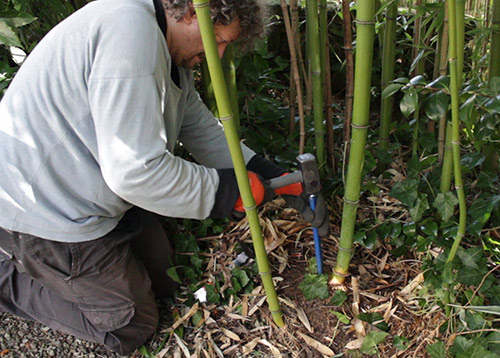
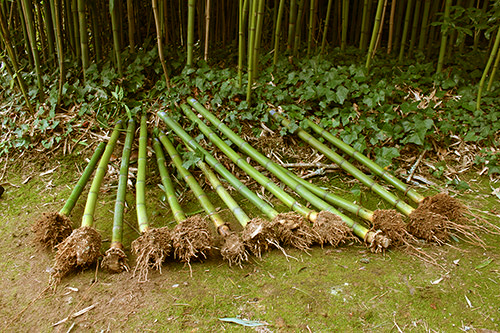
Cleaning & aburanuki
The excavated bamboo with the root end needs then carefully cleaned from earth and smaller roots. Traditionally the root section has three nodes, this is maybe partly aesthetics but as the bore narrows towards the root end it also correspondends closer with the desired inside bore diameter at the lower section of the flute. After cleaning any excess root section at the bottom is cut off.
To ‘seal’ the bamboo and make it less prone to splitting when drying, the bamboo is fire cured (aburanuki) over hot coals, which brings the resin to the surface of the bamboo and removes any excess moisture. It also changes the colour to a paler green.
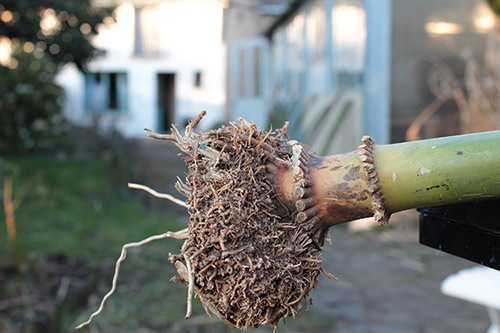
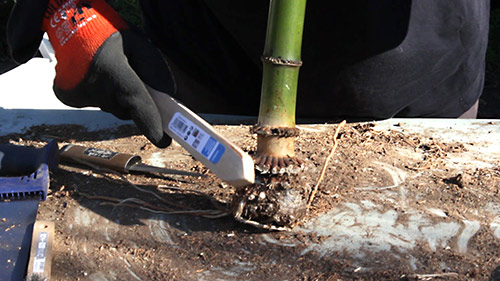
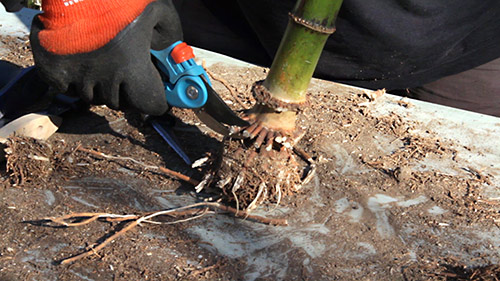
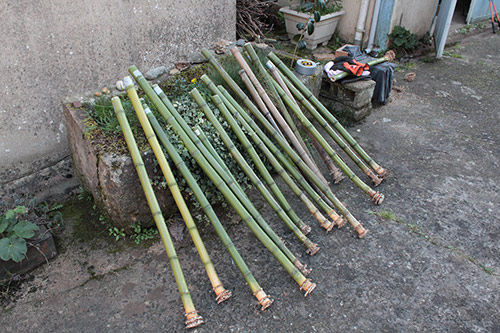
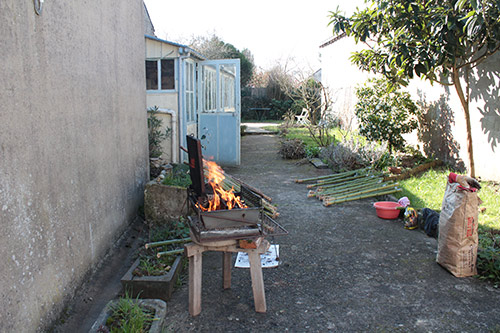
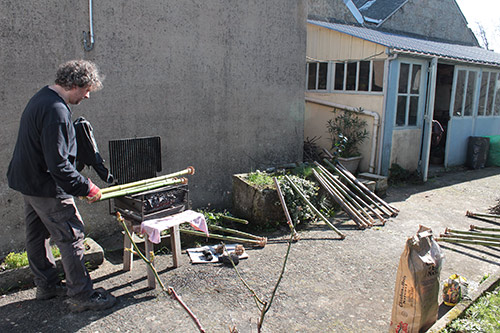
Drying
In Japan after aburanuki the bamboo is left out to dry in the winter sun for a few months before being stored away to dry for another minimum of 1-2 years, before one would attempt to make a shakuhachi out of it. Bamboo much ‘older’, i.e. stored already for 20 or 30+ years, is not uncommon and indeed highly sought after to make flutes.
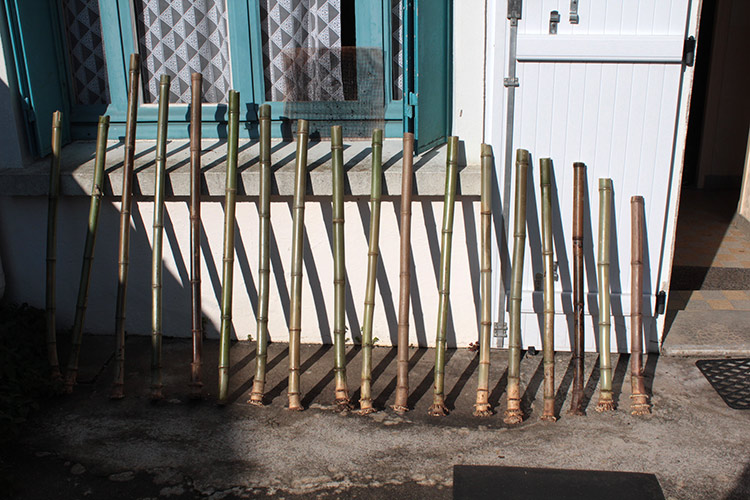
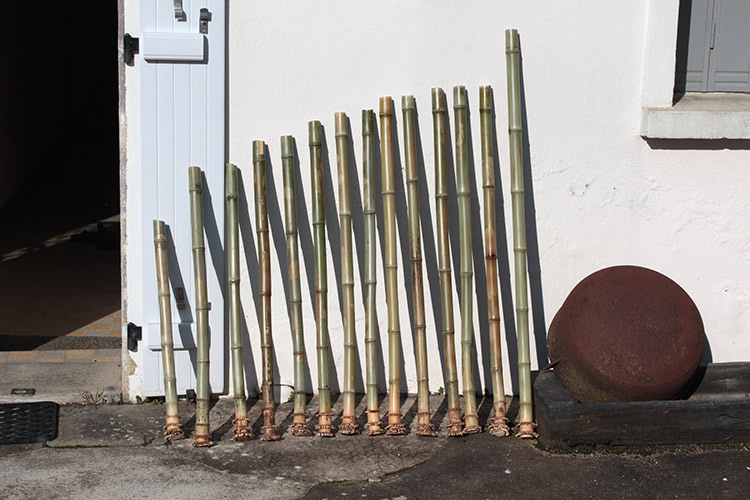
Cutting to size & preparing the inside
Looking at the nodal placement and the resulting internodal space it is determined which length of shakuhachi is most suitable for a particular piece of bamboo. A 1.8 shakuhachi has an overall length of ca. 54.6cm (key of D), a 1.6 ca. 48.4cm (key of E) and a 2.1 ca. 65.4cm (key of B). The two resulting halves would be roughly of equal length and having two halves will make it easier to apply the ji-paste later on.
Once cut to the desired length, the inside walls (below the nodes) are pierced through and then sanded away and the root bottom is opened with a hand drill.
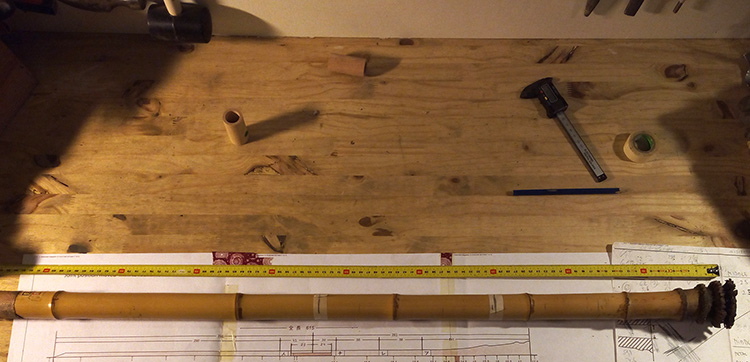
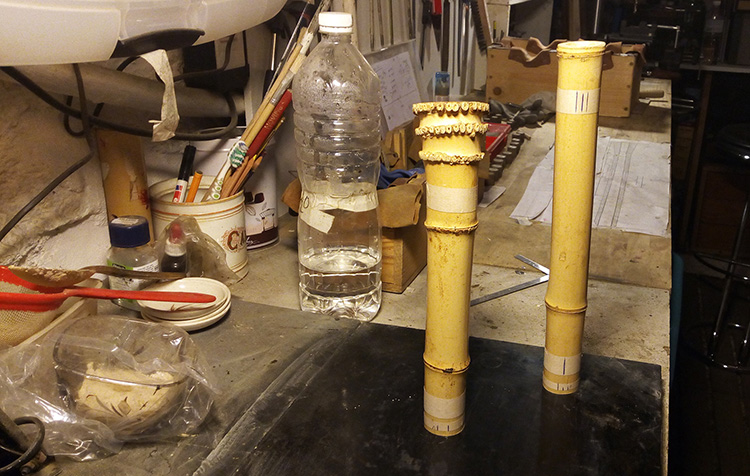
The middle joint
Generally speaking the middle joint (nakatsugi) will be placed after the 5th node. Traditonally the whole shakuhachi spans over seven nodes. So there are the three root end nodes, which are close together and retain parts of the actual root, then between the 4th and 5th node there are the first two holes, then the middle joint and two further nodes with the last or 7th being used for the mouth piece (utaguchi).
To create the middle joint, initially a narrow and shallow groove is filed all around the edge and an inlaid binding added to strengthen the area where the shakuhachi will be assembled/disassembled. Then after carefully chiseling away a sufficient area in diameter and depth of the inside bamboo wall in both halves – a special round metal insert is used to help to mark and align the bottom and top halves before – a cylindrical bamboo or wooden tenon is fixed in the bottom half, with its upper part sliding into the the top half of the bamboo to re-connect the two halves.
Usually a metal ring is placed on either end of the joint for support (later decoratively bound with rattan string) and black or red urushi lacquer is applied to ensure that the joint closes tight and is completely without any gaps where the two halves meet.
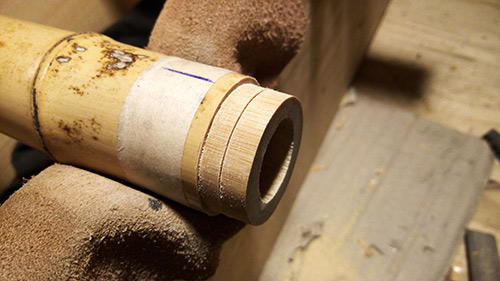
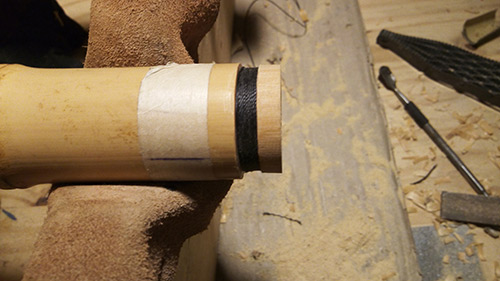
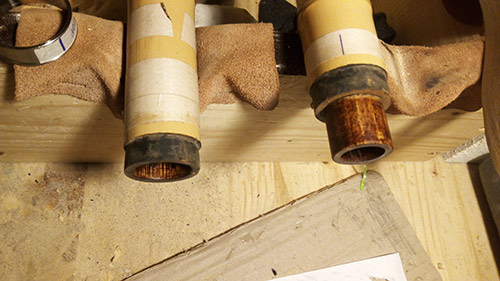
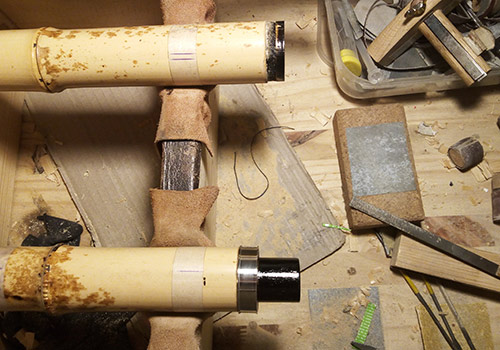
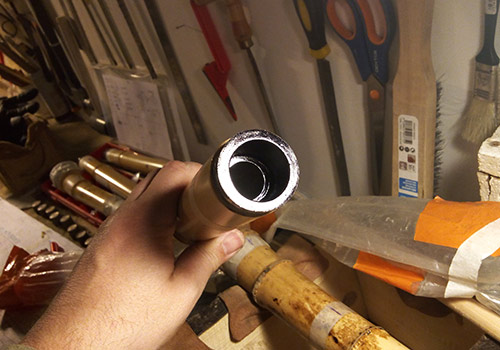
Applying ji paste & shaping the inside bore
Ji is a mixture of tonoko powder (a fine clay like stone powder), raw urushi (the sap from the japanese urushi tree) and a bit of water. (Depending on the maker’s preferences the tonoko can also be mixed with a fine dental plaster, or completely replaced with a plaster. ) At the start a thin coat of raw urushi is applied to prime the inside of the bamboo. After the ji mixture is applied in even coats inside the primed bamboo bore. The bamboo is then placed into a ‘humidity box’ for a few days, as urushi needs a warm and humid environment to cure as it binds the water in the air to harden.
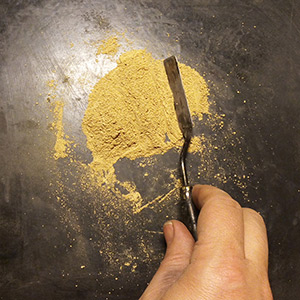
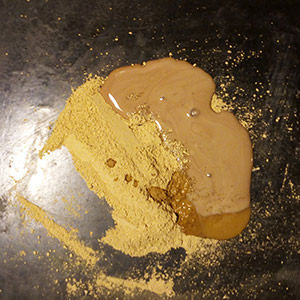
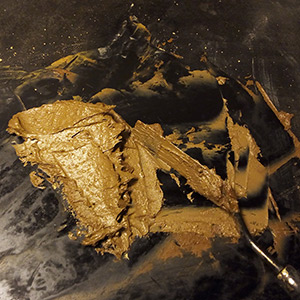
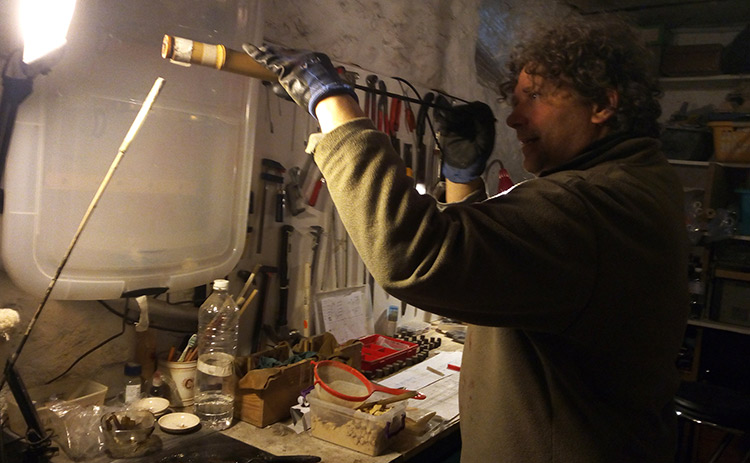
The cured interior is then sanded and another layer of ji is applied. This process is repeated numerous times with the aim to build up an exact and smooth inner bore profile. Different sized sandpaper coated metal cylinders fastened to a metal rod are used to shape the inside bore to an accuracy of up to 1/10 mm following an overall tapered profile, with the most narrow diameter just before the first hole being ca. 15 mm or less (on a 1.8 shakuhachi) and the widest at the mouth piece end (ca. 21mm). From the narrowest point towards the root end the flute usually flares out again.
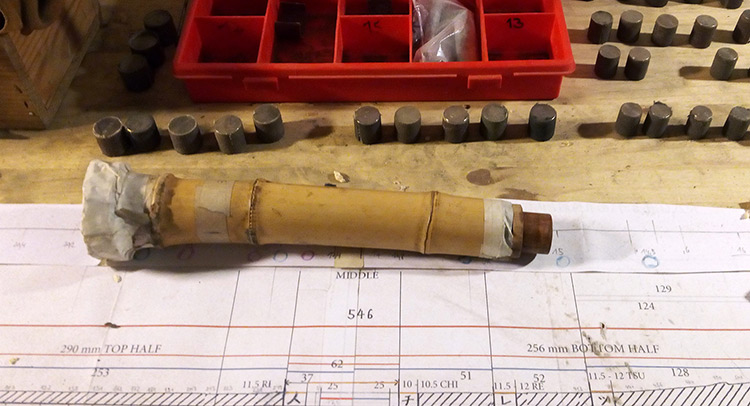
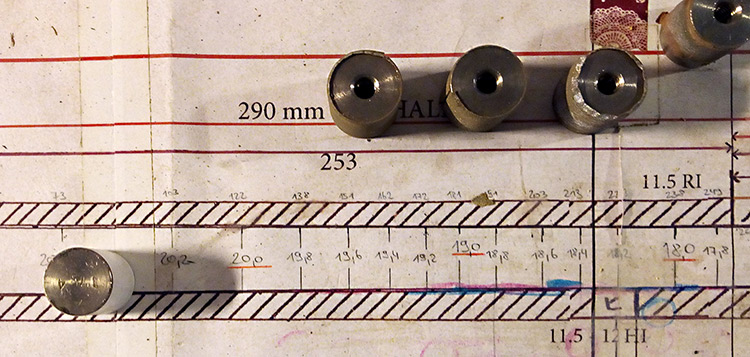
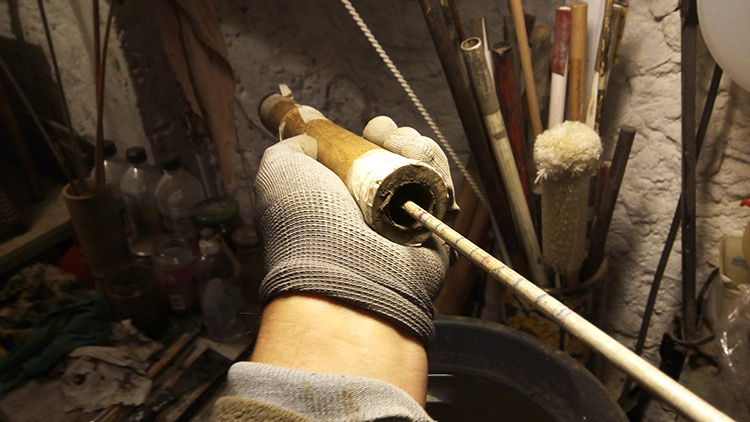
The bore profile is of course a crucial determining factor regarding the tuning and overall tonal colours of the flute. Minimal changes can have a great effect on the charateristics and playability of a flute, and different makers will follow different bore profiles.
The utaguchi
Another important part of the shakuhachi construction is the point where the sound is initially produced – the blowing edge or utaguchi (歌口, lit. ‘song mouth’). In its basic concept the blowing edge consist out of an oblique cut to the top node of the bamboo with a subsequent shallow rounded depression created at the resulting edge. The edge being the point where the airstream is split and the sound is produced. (“like blowing over a bottle neck” is often used as an illustration when describing the sound production on a shakuhachi)
Most (modern) jiari shakuhachi use a specially shaped piece of acryllic plastic or buffalo horn inserted at the blowing edge. The mouth piece inlay is shaped by filing and then placed into the prepared cut opening at the blowing edge. The shape of this insert varies from school to school. (E.g. Kinko-ryū uses a trapezoidal shaped insert and Tozan-ryū uses a curved shape; this is mainly an aesthetic choice as the insert shape itself does not affect the tone.) But the size, edge and depth of the rounded depression has a crucial impact on sound production and playing technique.
Traditionally a thin silver or gold foil is placed between the inlay and the bamboo when inserting it. This again may be partly an aesthetic choice, but also helps sealing the edge between plastic/horn insert and the bamboo.
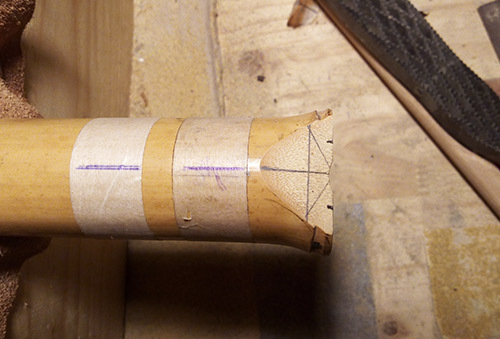
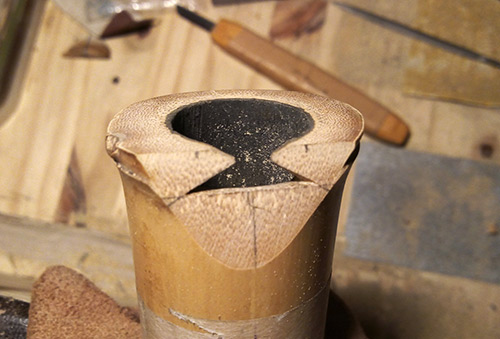
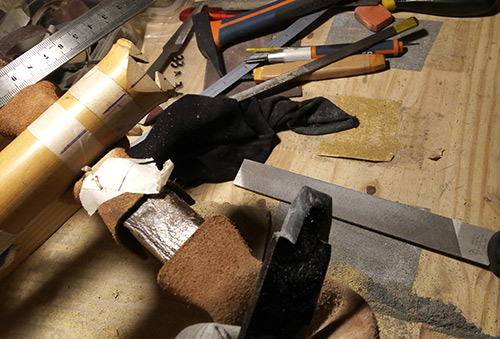
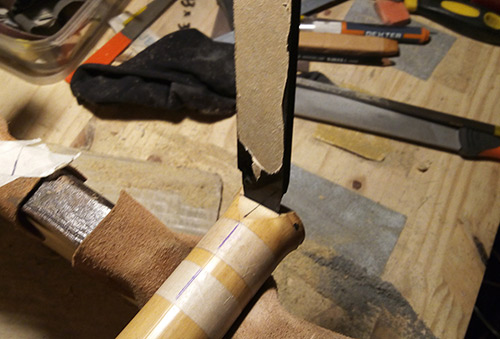
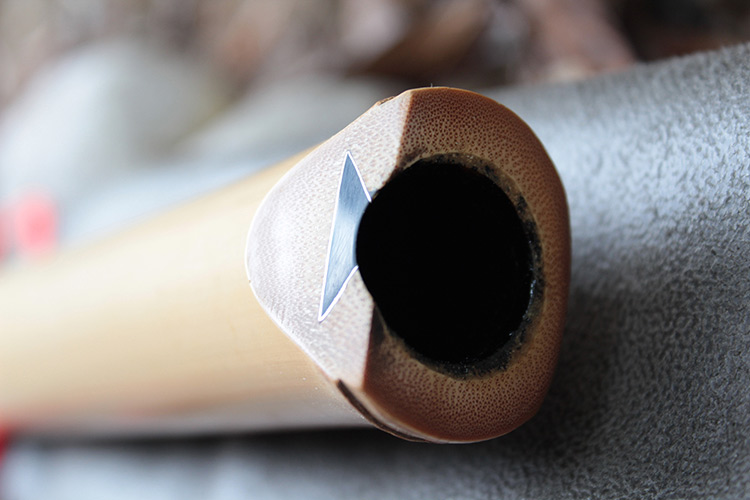
Holes
The shakuhachi has five finger holes, four at the front and one in the back. Generally speaking the two first bottom holes are situated between the 4th and 5th node, then the third and fourth hole are either side of the middle joint and a bit further up, but at the back side there is the fifth hole.
The hole size varies between ca. 11.0 mm for all except for the third hole (chi – hole) which is usually a bit smaller in diameter (10.5 mm) to avoid it being sharp in pitch while keeping the hole spacing even. There are various techniques of smoothing or undercutting the edges of the holes to enhance tone production, response and fine-tuning of the instrument.
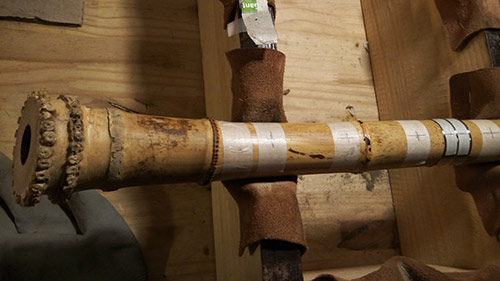
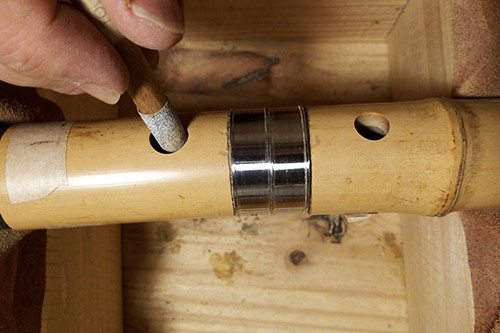
Lacquer & bindings
To finish up the shakuhachi several coats of thinned black or red urushi is painted on the inside bore. Again the shakuhachi has to cure between the different coats in a humidity box and it may take several weeks until the final coat is truly hardened and lost its smell. (This is particular important in case one finds oneself beiing allergic to fresh urushi…). Urushi hardens through polymerisation to a very smooth mirror like and durable surface and protects the flute against moisture seeping into the bamboo when playing.
Finally the flute is polished to give it an attractive sheen and to enhance the bamboo surface, a little bit of oil (e.g. walnut) is often applied too. Decorative bindings using special very narrow (e.g. 0.6mm – 1.2 mm) rattan strings are often placed around the metal rings at the joint, or any other part of the flute where bindings are present.
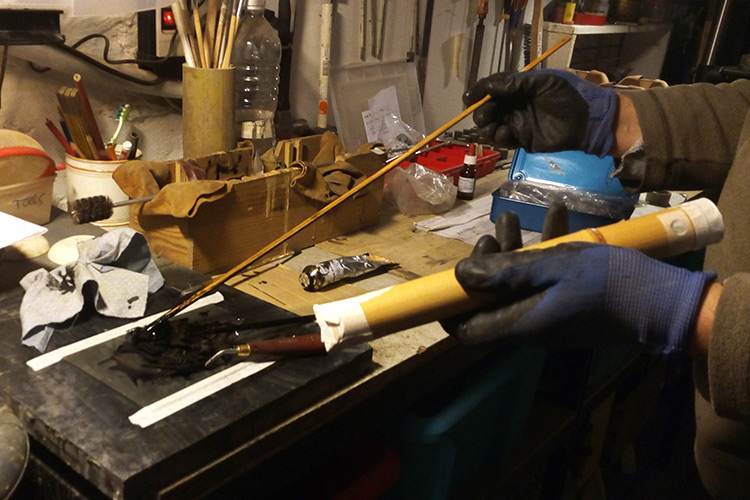
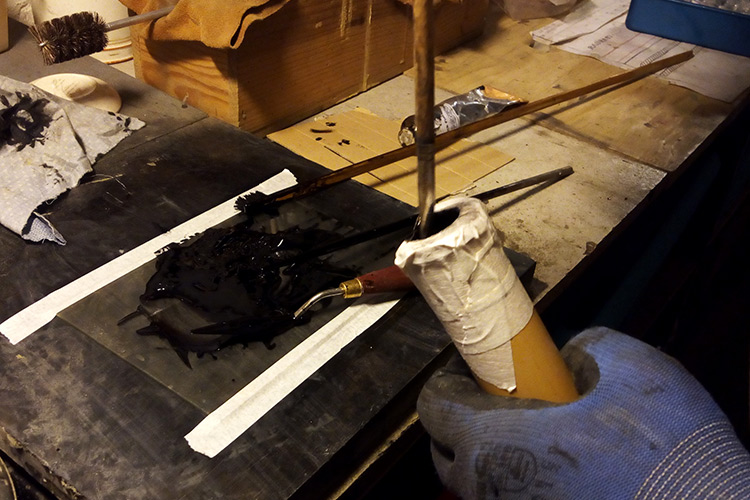
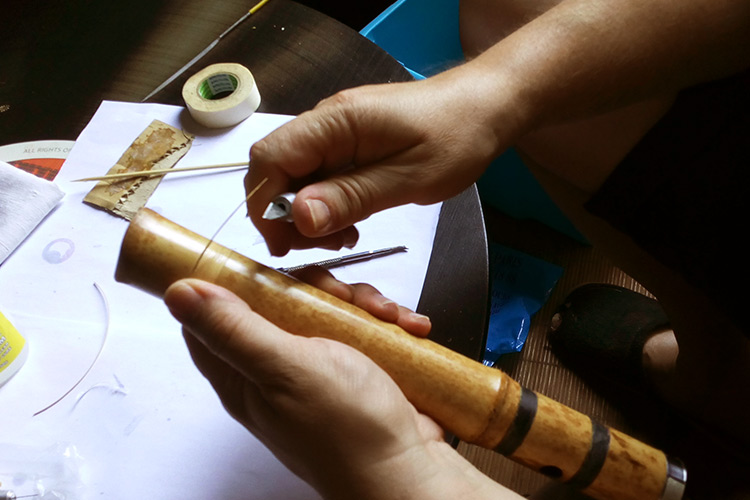
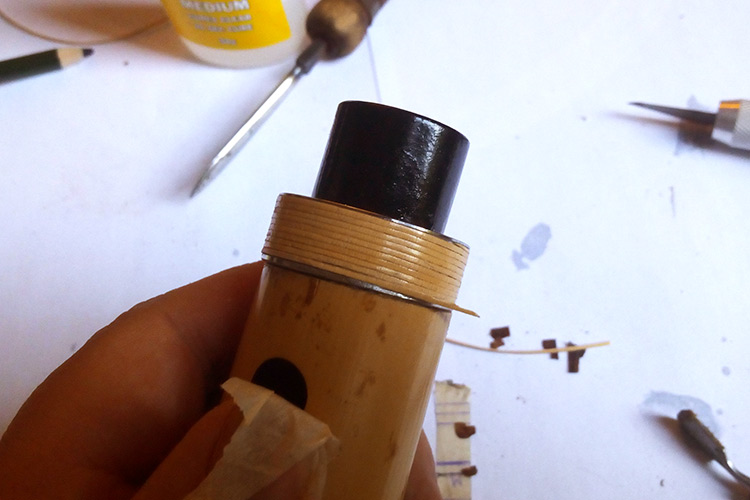
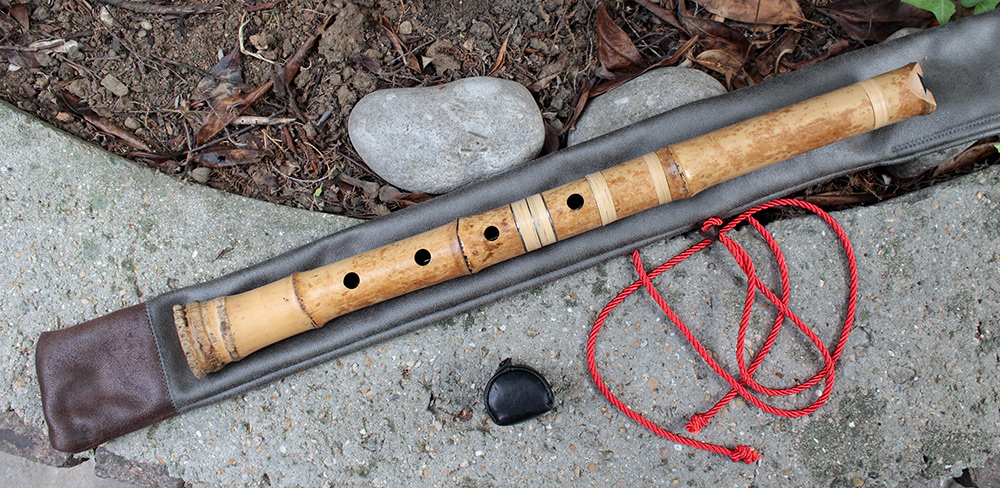
Care & maintenance
After playing it is advisable to use a cleaning cloth (tsuyutoshi) to wipe off any moisture present in the bore. Depending on the natural levels of humidity in your home, it is good practice to keep the shakuhachi in a closed plastic bag when not playing to protect the bamboo from low humidity levels which could result in cracking or splitting the bamboo pole. Some advice on taking care of your shakuhachi can be found here (PDF)

